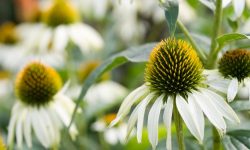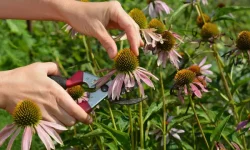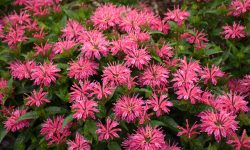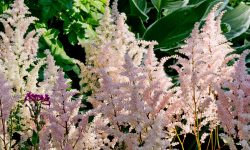Baptisia, more commonly known as false indigo, is a perennial that combines strength, resilience, and beauty in one remarkable plant. With tall flower spikes in shades of blue, purple, or yellow, it instantly adds charm and structure to any garden. The foliage remains attractive throughout the season, creating a lush background even when the flowers fade. Choosing to grow Baptisia from seed offers gardeners more than just cost savings; it provides the joy of nurturing life from its very beginning. There is something truly special about witnessing the transformation of a small, hardened seed into a flourishing plant that will return year after year.
The process of growing Baptisia from seed requires time and patience, yet the rewards are extraordinary. Each seed carries potential locked inside its tough coat, waiting for warmth, care, and persistence to awaken. With the right preparation and attention, gardeners can unlock that hidden beauty and enjoy vibrant blossoms that last for decades. This guide will take you step by step through the journey of seed starting, planting, and care, ensuring your Baptisia thrives and becomes a highlight of your outdoor space.
Understanding Baptisia and Its Growth Cycle
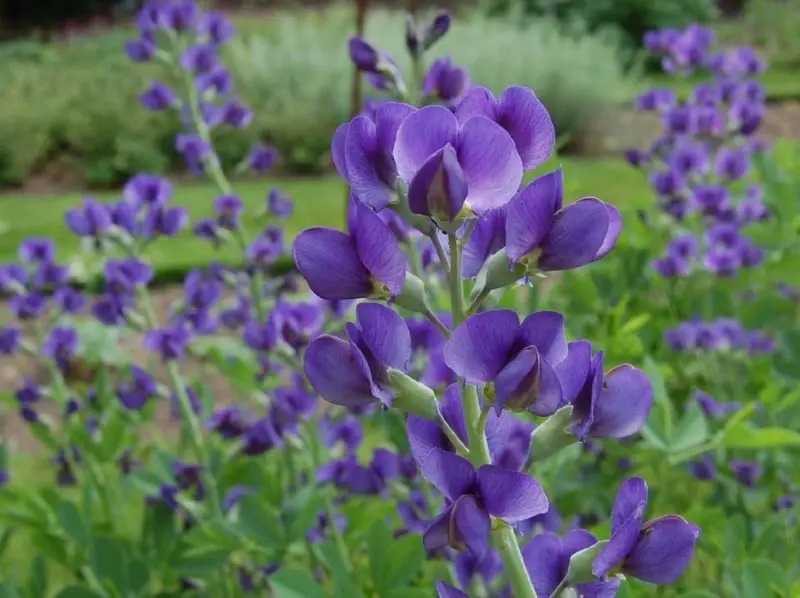
Baptisia is a hardy perennial native to North American prairies and meadows. It forms clumps of foliage and vertical flower spikes. Plants develop deep, woody root systems that store energy through seasons. These roots help the plant survive drought and harsh winters. Baptisia grows relatively slowly compared to many garden perennials. Seed-grown plants often focus on root development first. Expect minimal flowering in the first two years after sowing. Many gardeners see robust blooms by the third growing season.
Baptisia seeds have a very hard outer coat that enforces dormancy. Scarification or cold stratification improves germination rates dramatically. You can nick seeds with a file or soak them overnight before sowing. Many growers use a short cold period to mimic winter conditions. Warmth after stratification triggers the embryo to break dormancy and grow. Sow seeds shallowly in free-draining mix and keep medium evenly moist. Provide bright light but avoid hot direct sun on tender seedlings. Transplant seedlings once they have two true leaves and strong roots.
Flower spikes appear in late spring or early summer depending on climate. After bloom, attractive seed pods form and persist into autumn. Leave pods for seed collection or remove them to tidy the plant. Baptisia rarely needs division and dislikes root disturbance. Dividing mature clumps often harms the plant and reduces flowering. Instead, grow new specimens by sowing fresh seed each season. The plant supports pollinators and fits well in prairie-style beds. Being a legume, Baptisia improves soil by fixing atmospheric nitrogen. Once established, it needs little care and rewards with long life. Expect blooms to persist for several years with minimal extra intervention.
Preparing Baptisia Seeds for Successful Germination
Baptisia thrives when planted in the right soil and location. This perennial prefers soil that drains well and avoids waterlogging. Heavy clay soils can suffocate roots, but adding compost or sand improves structure. A loamy, moderately fertile soil provides the best conditions for early growth. Because Baptisia develops deep roots, it requires loose ground that allows downward penetration. Healthy soil encourages stronger stems and more abundant flower spikes. Investing in soil preparation ensures plants establish quickly and remain vigorous over many years.
Sunlight is equally important when selecting the right site. Baptisia performs best in full sun for at least six to eight hours daily. While it tolerates light shade, flowering usually decreases in such conditions. A bright, open position helps produce upright stems and vibrant floral displays. Avoid shaded corners or crowded borders where other plants block sunlight. Adequate sun exposure also reduces disease problems and supports stronger foliage. Good airflow around the plant lowers humidity and keeps leaves fresh. Placing Baptisia in a sunny location is essential for long-term success.
Planning the planting site requires considering mature size and lifespan. Baptisia often reaches three to four feet tall and wide at maturity. Its strong taproot anchors deeply and makes relocation nearly impossible. For this reason, choose a permanent spot before sowing seeds or planting seedlings. Borders, wildflower meadows, or prairie-style beds are perfect settings. Baptisia pairs beautifully with grasses, echinacea, or black-eyed Susans in naturalistic designs. Once planted, it needs little care beyond occasional watering in dry spells. With proper soil and location, Baptisia grows into a durable, low-maintenance highlight. Careful placement ensures decades of beauty, resilience, and reliable seasonal color.
Sowing Baptisia Seeds Step by Step
Sowing Baptisia seeds requires patience and careful preparation. After scarification and stratification, seeds are ready for planting. Begin with clean seed trays or small pots filled with sterile, well-draining medium. A mix of sand, perlite, and compost works especially well for germination. Sow seeds about a quarter inch deep and cover lightly with soil. Do not bury them too deeply, as this may delay emergence. Place trays in a warm environment with indirect light and stable temperatures. Even moisture is crucial during this stage to prevent drying or rotting.
Germination may take several weeks, sometimes up to two months. During this time, monitor soil moisture daily to ensure consistency. Use a spray bottle to avoid dislodging seeds with heavy watering. Once seedlings emerge, keep them in bright light but avoid scorching midday sun. Seedlings are fragile during early growth, so handle them gently. Allow the roots to strengthen before transplanting. If multiple seedlings sprout closely, thin them to prevent competition. This encourages stronger growth and reduces the risk of disease. Patience during this slow process leads to healthier plants later in the garden.
When seedlings produce two sets of true leaves, they are ready for transplanting. Harden them off by gradually exposing them to outdoor conditions. Begin with a few hours outside each day, increasing exposure slowly. This process reduces transplant shock and strengthens plants for outdoor life. Select permanent locations with good soil and sunlight, as Baptisia dislikes being moved. Water new transplants thoroughly to help roots settle into the soil. Continue light watering until plants show signs of strong establishment. With these careful steps, you guide Baptisia from seed to sturdy young plants ready for long-term growth.
Caring for Young Baptisia Seedlings
Watering and Moisture Management
Young Baptisia seedlings need consistent and careful watering to thrive. In their earliest stages, the soil should stay evenly moist but never soggy. Overwatering can lead to root rot, while underwatering may stunt development. A fine mist spray or gentle watering can is the safest method to hydrate seedlings. This approach prevents soil disturbance that could damage delicate roots. As seedlings begin to grow taller, gradually reduce the frequency of watering. Allowing soil to dry slightly between waterings encourages roots to extend deeper. Stronger root systems ensure seedlings adapt more successfully when transplanted outdoors.
The surrounding environment also influences water needs significantly. Indoor heating or strong sunlight can cause rapid evaporation, making daily checks essential. Place seedlings in a stable environment with moderate humidity and monitor soil moisture regularly. If soil feels dry an inch below the surface, water immediately. Over time, seedlings will tolerate less frequent watering, reflecting their natural drought resistance. Maintaining a steady rhythm of moisture gives them resilience against transplant shock. Well-hydrated seedlings are not only stronger but also develop lush foliage earlier. This preparation ensures they are ready to handle outdoor conditions and long-term growth successfully.
Light and Temperature Requirements
Light is a critical factor for the healthy development of Baptisia seedlings. During the early stages, seedlings thrive under bright but indirect sunlight. Direct midday sun may scorch the tender leaves, so filtered light or a grow light is ideal. If natural light is limited, place seedlings under fluorescent or LED grow lights for 12 to 14 hours daily. Consistent exposure encourages strong stems and balanced growth. Without enough light, seedlings may stretch, becoming weak and more prone to damage. By ensuring the right light levels, you help them develop the energy needed for future flowering.
Temperature also plays an important role in seedling health. Baptisia prefers moderate conditions between 65 and 75 degrees Fahrenheit. Fluctuating temperatures can stress seedlings and slow growth. If growing indoors, avoid placing trays near drafts or heating vents. Stable warmth encourages steady development and reduces transplant shock later. Outdoors, wait until frost danger has fully passed before moving seedlings. Sudden cold can damage young growth that has not yet hardened. Maintaining balanced light and temperature ensures seedlings grow compact, strong, and ready for long-term establishment in the garden.
Fertilizing and Soil Nutrition
Baptisia seedlings grow slowly at first, focusing their energy on root development. While they do not need heavy feeding, balanced nutrition supports steady growth. A diluted, water-soluble fertilizer with equal parts nitrogen, phosphorus, and potassium works well. Apply every two to three weeks once the first true leaves appear. Avoid over-fertilizing, as excess nutrients may burn delicate roots or encourage weak, leggy growth. Using a half-strength solution provides the gentle boost seedlings need without overwhelming them. Organic options such as liquid seaweed or compost tea are also effective and safe for tender plants.
The quality of the growing medium directly influences seedling health. A light, well-draining mix enriched with compost provides enough nutrients for early stages. As roots expand, they benefit from trace minerals in the soil. Healthy nutrition encourages strong foliage and sets the foundation for future flowering. Baptisia, being a legume, will eventually fix nitrogen once established outdoors. However, seedlings cannot do this effectively until mature root nodules form. Providing balanced nutrition early ensures vigorous plants ready for transplanting. With the right soil and fertilizing routine, seedlings grow sturdier, greener, and better prepared for long-term success in the garden.
Transplanting Young Seedlings Outdoors
Transplanting Baptisia seedlings outdoors is an important step that requires planning and care. These young plants are sensitive, so timing is crucial for their survival. Wait until seedlings have developed at least two sets of true leaves and the risk of frost has passed. Before transplanting, harden them off by gradually introducing them to outdoor conditions. Start with a few hours in a shaded area, then increase sun exposure daily over one to two weeks. This process strengthens seedlings and reduces transplant shock. A slow transition ensures they adapt smoothly to natural light, wind, and temperature changes.
When planting outdoors, choose a permanent location because Baptisia dislikes being disturbed once established. Dig holes large enough to accommodate the young roots without bending them. Place seedlings at the same depth they grew in containers and fill gently with soil. Water thoroughly after transplanting to help roots settle in place. Keep the soil moist during the first weeks to support establishment. Over time, seedlings develop deep taproots that provide drought resistance and long-term stability. With patience and proper care during transplanting, young Baptisia seedlings will grow into vigorous perennials that reward you with stunning blooms for decades.
Nurturing Baptisia Plants to Maturity
Once your baptisia seedlings have established their first sets of true leaves, the process of nurturing them to maturity requires steady attention and patience. This perennial is slow to develop during its early years, often focusing more on root establishment than above-ground growth. Providing well-drained soil enriched with organic matter ensures healthy development, while consistent but not excessive watering prevents root rot. During this stage, avoid moving or disturbing the plants, as baptisia dislikes transplanting once its deep taproot begins to form. Patience is essential because the plant often takes several years before producing its first significant blooms.
As baptisia continues to mature, proper spacing becomes increasingly important. Mature plants can spread widely, so seedlings should be given ample room to avoid crowding and competition. Mulching around the base helps retain moisture, regulate soil temperature, and suppress weeds without suffocating the plant. In terms of nutrition, baptisia generally thrives without heavy feeding, but a balanced, slow-release fertilizer applied in spring can support steady growth. Keep an eye out for weeds or nearby aggressive plants that could hinder its development, especially in the first two to three years.
By the time baptisia reaches maturity, usually around its third to fourth year, it rewards gardeners with tall stems, lush foliage, and vibrant flower spikes that return reliably each season. Once established, the plant is highly drought-tolerant and requires minimal care, making it a long-lasting feature in any garden. Proper nurturing in the early stages not only ensures strong root development but also guarantees decades of beauty with little intervention. Baptisia’s ability to thrive with low maintenance makes it a rewarding perennial for gardeners willing to invest patience and care during its formative years.
Propagating Baptisia Beyond Seeds
Although growing baptisia from seed is the most common method, gardeners may also explore alternative propagation techniques to expand their collection. Division is sometimes attempted, but due to baptisia’s deep taproot, this method can be challenging and often unsuccessful if the plant is already mature. If done, it should be attempted only with young plants that have not yet established extensive root systems. Even then, divisions require careful handling and a long recovery period, making it less practical for most home gardeners.
Another option is propagation through root cuttings. This method is typically carried out in late fall or early spring when the plant is dormant. Gardeners can take sections of thick, healthy roots and replant them in pots or directly in the garden. With consistent moisture and protection from harsh conditions, some of these cuttings will develop into new plants. However, success rates can vary, and patience is required since growth may be slow at first. Compared to seed propagation, root cuttings demand greater precision but can yield faster results once established.
Overall, propagation beyond seeds is possible but comes with challenges that require advanced skill and care. Because baptisia is naturally long-lived and self-sufficient once established, many gardeners prefer to grow it from seed despite the waiting period for maturity. For those who do experiment with alternative methods, the reward lies in producing additional plants more quickly while preserving the unique traits of the parent specimen. Whether by seed, division, or cuttings, each propagation attempt adds to the gardener’s experience and deepens appreciation for this resilient perennial.
Dealing with Common Baptisia Problems
Although baptisia is generally considered a hardy and low-maintenance perennial, gardeners may still encounter a few common problems. One issue is yellowing leaves, which often result from overly wet soil or poor drainage. Because baptisia has a deep taproot, it thrives best in well-drained conditions and may decline if waterlogged. Ensuring proper soil preparation and avoiding excessive watering are simple ways to prevent this stress. In some cases, temporary yellowing may occur in midsummer as the plant enters a natural dormant phase, which is not a cause for concern.
Pests are rarely a major threat to baptisia, but certain insects such as weevils and caterpillars can occasionally feed on the foliage. These infestations are typically minor and do not harm the long-term health of the plant. If populations become heavy, gardeners can manually remove pests or introduce beneficial insects like ladybugs to restore balance. Fungal diseases are also uncommon, though overcrowding and poor air circulation can create conditions for powdery mildew or leaf spot. Proper spacing between plants and good garden hygiene help minimize these risks.
Another challenge some gardeners face is the slow establishment period. Baptisia often takes two to three years before producing its first significant flowers, leading to impatience or concern. Understanding this natural growth cycle is essential to avoid unnecessary intervention. Once mature, baptisia becomes extremely resilient, drought-tolerant, and self-sufficient. By recognizing common issues early and applying preventive measures, gardeners can ensure their baptisia plants remain healthy, vibrant, and long-lasting features in the landscape.
Designing Garden Landscapes with Baptisia
Baptisia is not only valued for its durability and long life but also for its ornamental qualities that enhance garden landscapes. Its tall, elegant flower spikes in shades of blue, purple, yellow, or white bring striking vertical interest to planting beds during late spring and early summer. Once the blooming season ends, the plant continues to offer decorative appeal with its lush foliage and dark seed pods that remain attractive through fall. This multi-season beauty makes baptisia a versatile choice for both formal borders and naturalized garden settings.
When designing with baptisia, it is important to consider its mature size. A single plant can spread several feet wide, so it is best placed toward the middle or back of a border where it has room to expand. Baptisia pairs beautifully with other perennials that thrive in similar conditions, such as echinacea, rudbeckia, and ornamental grasses. These companions not only complement baptisia’s flower colors but also extend seasonal interest by blooming before or after its peak. Using baptisia in mixed plantings also helps create a layered look that prevents bare spots as the growing season progresses.
Because of its deep taproot and drought tolerance, baptisia works especially well in low-maintenance or prairie-style gardens. It requires minimal care once established and provides habitat value for pollinators, including bees and butterflies. Its bold structure can also serve as an anchor plant around which smaller perennials and groundcovers are arranged. By thoughtfully incorporating baptisia into garden designs, gardeners can enjoy a perennial that contributes structure, color, and resilience while requiring little ongoing effort.
Common Mistakes to Avoid When Growing Baptisias
Overwatering and Poor Soil Preparation
One of the most frequent mistakes gardeners make when growing baptisia is providing too much water. Baptisia develops a strong, deep taproot that allows it to withstand drought once fully established. Excessive watering or planting in heavy clay soil often causes root suffocation, leading to rot and stunted growth. Gardeners sometimes treat baptisia like a water-loving annual, but this approach weakens the plant and prevents it from thriving. Unlike shallow-rooted flowers, baptisia needs time to adapt to its environment, and soggy soil disrupts that natural process.
The best way to avoid this issue is by improving soil before planting. Loamy or sandy soil mixed with compost provides nutrients while still draining well. Raised beds or gently sloping sites can reduce the risk of water pooling after heavy rain. It is also important to avoid piling mulch too high around the crown, as this traps unnecessary moisture and encourages disease. Watering should be done deeply but infrequently, allowing the soil to dry slightly between sessions. By preparing the right soil conditions and managing moisture wisely, gardeners set baptisia on a path to long-term success and decades of resilience.
Impatience with Early Growth
A second mistake is expecting baptisia to flower too soon. This perennial spends its early years investing energy into building a strong root system rather than producing blooms. Many gardeners, frustrated by the slow progress, try moving or dividing the plant within its first seasons. Unfortunately, disturbing the deep taproot not only delays flowering but can also permanently damage the plant, leaving it struggling for years. The disappointment often comes from misunderstanding baptisia’s natural growth cycle, which is slower compared to other perennials.
Instead of rushing the process, gardeners should embrace patience. Baptisia usually takes two to three years to produce its first impressive flower spikes. During this time, it benefits most from consistent sunlight, moderate watering, and stable conditions without disturbance. Fertilizing lightly in spring with a balanced mix can encourage healthy foliage while roots continue developing underground. As the plant matures, it becomes increasingly independent and reliable. Once baptisia reaches its full potential, it produces dramatic blooms each year with minimal effort, rewarding gardeners who allowed it the time it needed to establish.
Incorrect Spacing and Overcrowding
Another common mistake occurs when gardeners plant baptisia too close to neighboring perennials. Mature baptisia can spread three to four feet wide, and without adequate room, its natural shape becomes cramped and distorted. Overcrowding restricts air circulation, which raises the risk of fungal issues like powdery mildew or leaf spot. Shading from nearby plants also limits light exposure, reducing flower production and weakening the stems. A crowded baptisia often looks stressed and cannot display the bold structure that makes it so distinctive.
To prevent these issues, spacing should be planned with maturity in mind. Gardeners should leave at least three feet of room around each plant, allowing it to expand naturally. Positioning baptisia toward the middle or back of a border helps showcase its upright flower spikes while giving smaller plants space in the foreground. Proper spacing also makes garden maintenance easier by reducing weeding and disease management. When given enough room, baptisia develops into a striking focal point, with lush foliage and colorful blooms that enhance the overall landscape design. Careful planning at the beginning ensures a healthier, more beautiful plant for decades.
FAQ About How to Grow Baptisia from Seed
How long does it take baptisia seeds to germinate?
Baptisia seeds are slow to sprout, often taking 3 to 6 weeks, and sometimes even a few months. Pre-treating seeds with scarification and cold stratification can help speed up germination. Patience is key, as the plant invests heavily in root development before visible growth appears above the soil.
Can baptisia be grown in containers?
Growing baptisia in containers is difficult because of its deep taproot, which needs space to expand. While seedlings may start in pots, they should eventually be transplanted into the ground. Containers can restrict root growth, leading to weaker plants and shorter lifespans compared to garden-grown specimens.
When will baptisia start flowering?
Baptisia typically takes two to three years before producing its first significant blooms. During this time, the plant is focusing on establishing a strong root system. Once mature, baptisia rewards gardeners with tall spikes of colorful flowers that return reliably each spring and last for several weeks.
How much sunlight does baptisia need?
Baptisia thrives best in full sun, requiring at least six hours of direct sunlight each day. It can tolerate light shade but may produce fewer flowers and become less vigorous. Planting in a sunny, well-drained location ensures healthier growth, vibrant blooms, and stronger resistance to potential stress factors.
Is baptisia prone to pests or diseases?
Baptisia is relatively pest- and disease-resistant, making it a low-maintenance perennial. Occasional issues like weevils, caterpillars, or powdery mildew may appear but rarely cause lasting damage. Proper spacing, good soil drainage, and regular garden care are usually enough to keep baptisia plants healthy and thriving for decades.
Conclusion
Baptisia is a perennial that rewards patience with decades of beauty and resilience. Though slow to establish, it develops a strong taproot and produces striking blooms that brighten gardens year after year. By sowing seeds at the right time, nurturing young plants carefully, and understanding its growth cycle, gardeners can ensure long-term success. Once mature, baptisia requires little care while adding structure, color, and wildlife value to landscapes. Whether grown from seed or other methods, it proves that waiting patiently brings lasting elegance to any garden.


